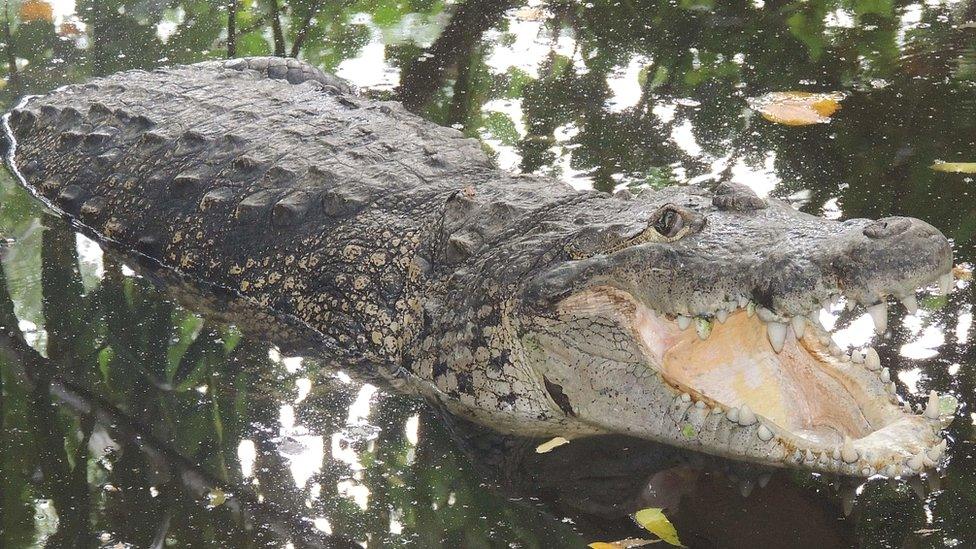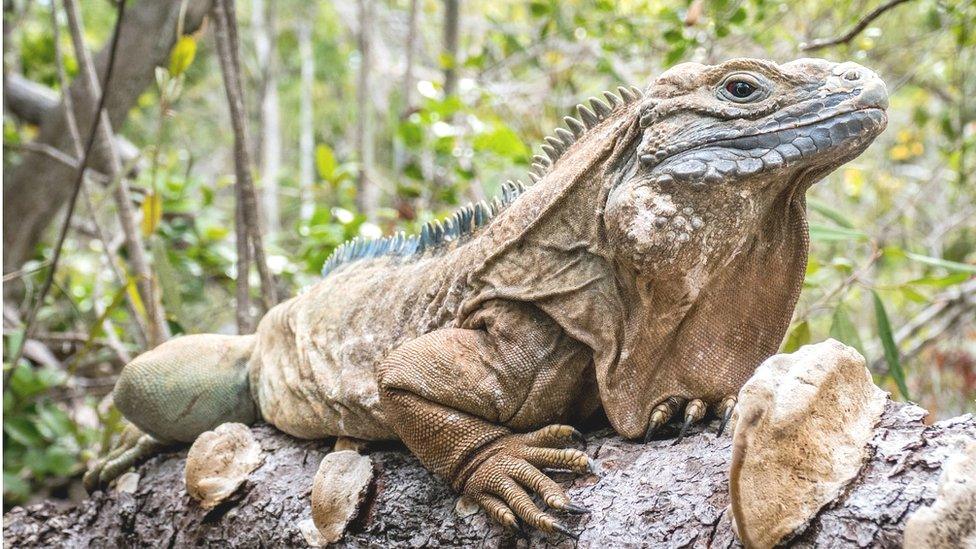One in five reptiles is threatened with extinction
- Published

The venomous king cobra is in decline because of deforestation and human persecution
One in five reptiles is threatened with extinction, according to the first comprehensive assessment of more than 10,000 species across the world.
Scientists are calling for urgent conservation action for crocodiles and turtles, which are in a particularly dire situation.
They say reptiles have long been overlooked in conservation, because they are seen as less charismatic than "furry and feathery" creatures.
So far, 31 species have gone extinct.
The study, published in Nature, took more than 15 years to complete, because of problems getting funding for the work.
"Reptiles to many people are not charismatic and there's been a lot more focus on more furry, feathery species of vertebrates for conservation," said Dr Bruce Young of the international nature organisation, NatureServe.

Geckos are vanishing in parts of the world due to wildlife trade
Despite their low publicity profile, the cold-blooded vertebrates play an essential role in the balance of life.
"Reptiles are good for people because they help control pests such as insects and rodents," said Prof Blair Hedges of Temple University in Philadelphia, US.
By publicising the plight of these "truly spectacular species", the scientists hope to help slow the slide towards oblivion of reptiles such as the loggerhead sea turtle and the gharial, or fish-eating crocodile.
And there is a glimmer of hope in that measures put in place to protect rare birds and mammals also safeguard many of the reptiles that share the same land.

The mugger crocodile: Threatened by habitat destruction and human conflict
The study found:
21% of reptile species are threatened (1,800 individual species); which is higher than for birds, but lower than for mammals and amphibians
More than half of crocodiles and almost two thirds of turtles are threatened with extinction
Reptiles are threatened throughout the world, but particularly in southeast Asia, West Africa, northern Madagascar, the northern Andes and the Caribbean
Habitat destruction from the expansion of farmland, urban development and logging is a big factor pushing reptiles to the brink. Crocodiles and turtles also face threats from hunting
Reptiles found in forests are more at risk than those living in deserts and savannahs
Climate change is a looming threat to reptiles, particularly on low-lying islands
If we were to lose all reptile species at risk of extinction, 15.6 billion years of phylogenetic biodiversity (a measure of genetic variation based on the tree of life) would be wiped from the planet.

Lizards are generally less threatened than other reptiles
Speaking at a news conference, the study authors highlighted the need for a new worldwide agreement to stem extinctions.
Neil Cox of the IUCN-Conservation International Biodiversity Assessment Unit said negotiations at the upcoming summit on biodiversity in Kunming, China, will be critical for trying to turn the tide on biodiversity loss.
"The hope is that we can really start making efforts to reverse this extinction catastrophe," he said.
The final version of the draft UN Convention on Biological Diversity (CBD) will be negotiated at the COP15 summit, which is expected to take place at the end of August.

Jamaican iguana: Reptiles on islands face risks from invasive species and sea level rise
The outcome will decide for the coming decades how the world will address the challenges of reducing the extinction risk threatening more than one million species, eliminating billions of dollars of environmentally-damaging government subsidies and restoring degraded ecosystems.
Follow Helen on Twitter, external